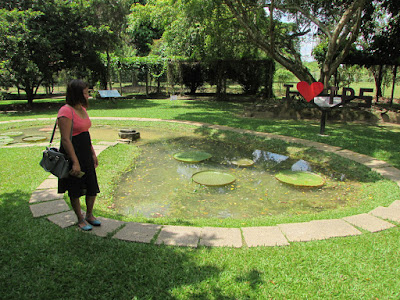 |
| Pygmy Elephant at the Lok Kawi Zoo |
Pygmy can be an adjective used in names of plants and
animals that are much smaller than more typical kinds. In Borneo, you could
find pygmy rhinos, pygmy pythons and pygmy elephants. Sadly, pygmy rhinos had
gone extinct in 2017 and the other pygmies are also facing extinction; if no
efforts are made to protect them.
I used to think; in order to see elephants in the wild we
have to go to either Africa or India. It never crossed my mind that this
magnificent creature is roaming in our own backyard in Borneo! Actually
elephants can be found not only in Africa or India, but also in most parts of
Southeast Asia. In India and Thailand, elephants are tamed so that they could
be used as a transporter of people and cargos. In ancient time, they played the
role as armored tanks in battle. The most famous story was elephants used by
the Carthaginian against the Roman in the Punic War.
Our Pygmy Elephant also known as Borneo Elephant is a
subspecies of the Asian Elephant. Presently, it is confined to the northern
parts of Borneo; in the east coast of North Borneo (Sabah) as well as northeast
Kalimantan (Indonesian Borneo). Wild elephants in Borneo seem to roam only
within these areas despite having access to suitable habitat elsewhere. Some
researchers say that Borneo Elephant is endemic to this island and therefore
unique. Others said it was an introduced species brought in by the Sultan of Sulu
in the 18th century and later released into the wilderness of
Borneo. But DNA testing made confirmed this animal indeed had been in Borneo
for a very long time but this issue is still debatable.
But one fact remains true; the population of wild elephants
in Borneo is rapidly diminishing. There are only 2000 Pygmy elephants left in
the wild and captivity. In North Borneo, there were unfortunate series of
elephant deaths happening within the last few years. In 2013, there were 14
elephants that died after being poison. In early 2018, 6 elephants died due to
an unknown disease and later a juvenile elephant was found death after being
shot at close range.
Expanding human population is creating habitat loss for these
elephants as the human disrupt their migration routes and deplete their food
sources. Thus these elephants had no choice but to encroach into human
settlements in search of food; creating human-elephant conflicts. The major
culprits for the elephant misery are the logging activities as well as the land
clearing for palm oil plantations.
The government of North Borneo says they want to promote
tourism because of the unique and endemic diversities of Borneo rainforest that
offers a lot of interesting sights for tourists and visitors. Yet they destroy
these sceneries by giving a free hand to logging and plantation companies to
rape the environment! I implore to the government to stop the expansion of
logging and plantation activities; once and for all. The remaining forests
should be protected at all cost. The government must also rehabilitate wide
swath of lands that had been destroyed due to these activities and replaced
them through reforestation exercises using local species of plants. Only then
can we hope to see the return of wild animals to our forest and reverse the
possibility of their extinction.
 |
| FOR MORE DETAILS PLEASE LOG TO www.travelleisureborneo |










